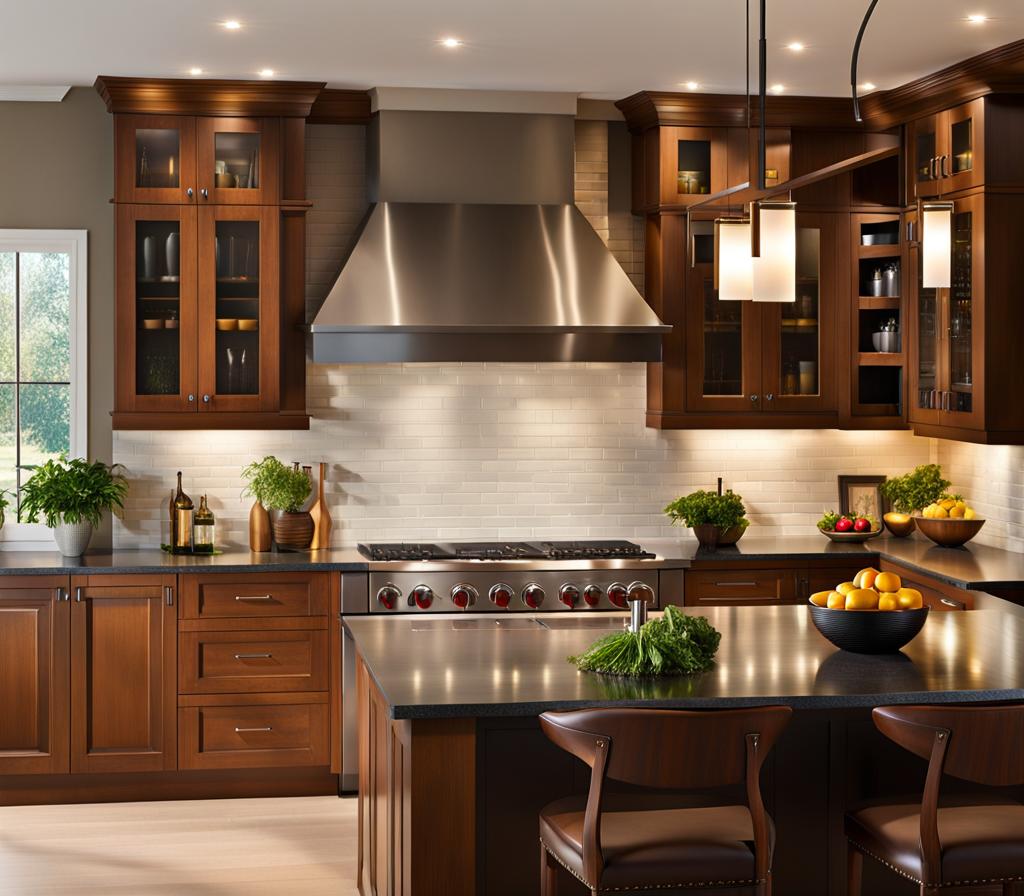Ah, the kitchen – the heart of every home, where culinary magic happens. But let’s be real, it’s not just about the delicious meals we whip up; the aesthetic appeal of this sacred space plays a crucial role too. One element that can make or break the overall vibe? The counter height. Yep, that seemingly mundane detail can actually elevate (pun intended) the entire look and functionality of your cooking haven.
Unveiling the Standard Counter Height: Definition and Importance
Before we dive into the nitty-gritty, let’s kick things off with a quick definition. The standard counter height typically ranges from 36 to 39 inches, with 36 inches being the most common. Now, you might be thinking, “Okay, cool… but why does it matter?” Well, my friend, the counter height is the backbone of your kitchen’s ergonomics and design harmony.
Imagine having to hunch over or stretch uncomfortably every time you prepare a meal or entertain guests. Talk about a recipe for discomfort and a serious style faux pas! That’s why nailing the perfect counter height is crucial – it ensures your kitchen looks sleek while providing optimal comfort and functionality. Trust me, your back (and your guests) will thank you.
Factors Influencing the Ideal Counter Height
Now, before you go measuring and renovating, hold your horses! There are a few key factors that come into play when determining the ideal counter height for your kitchen. Let’s break ’em down:
- Your height (and the height of your family members): Because counter heights aren’t a one-size-fits-all deal. Taller individuals might prefer a higher counter, while shorter folks might find a lower one more comfortable.
- Kitchen layout and design: The counter height needs to complement the overall aesthetic and flow of your kitchen. An open-concept design might call for a different height than a more enclosed space.
- Purpose of the counter: Are we talking about a main prep area or a casual breakfast bar? The intended use will influence the optimal height.
See what I mean? It’s not as straightforward as you might’ve thought. But don’t sweat it – we’ll break down each of these factors in more detail, so you can make an informed decision that checks all the boxes.

Ergonomic Considerations for Standard Counter Heights
Let’s be real – nobody wants a kitchen that looks fly but is a total pain to use. That’s why ergonomics should be at the top of your priority list when determining the perfect counter height. After all, you’ll be spending countless hours prepping, cooking, and cleaning in this space, so comfort is key.
The general rule of thumb is to aim for a counter height that allows you to work comfortably without straining your back, neck, or arms. This means your elbows should be bent at a 90-degree angle when you’re standing in front of the counter. Too low, and you’ll be hunching over like a question mark. Too high, and you’ll be stretching like a giraffe reaching for those top-shelf snacks.
But wait, there’s more! Don’t forget about clearance for your knees and legs. You’ll want enough space beneath the counter to pull up a stool or stand comfortably without feeling cramped. Trust me, nobody wants a kitchen that feels like a sardine can.
Design Aesthetics: Harmonizing Standard Counters with Interior Styles
Okay, so we’ve covered the functional aspects, but let’s not forget – your kitchen is also a showpiece! The counter height plays a significant role in the overall aesthetic appeal of the space, so it’s crucial to consider how it’ll vibe with your interior design style.
For instance, if you’re going for a sleek, modern look, a standard 36-inch counter height might be the way to go. It’ll give you that clean, minimalist vibe and create a seamless flow with your contemporary cabinetry and fixtures. On the other hand, if you’re aiming for a more traditional or rustic feel, a slightly higher counter (say, 38 or 39 inches) could add a touch of warmth and coziness to the space.
And let’s not forget about those trendy waterfall countertops or breakfast bars! These design elements often call for a different counter height to achieve that perfect, Instagram-worthy aesthetic. Trust me, you’ll want to consider all these factors before making any permanent decisions.
Alright, so we’ve covered the aesthetic and ergonomic aspects, but there’s one more crucial element to consider: how the counter height impacts your overall kitchen workflow. Because let’s be real – a beautiful kitchen is great, but if it’s not functional, you’ll be cursing it every time you try to whip up a meal.
Think about how you move through your space when you’re cooking or entertaining. Do you have a designated prep area? A baking station? A spot for casual dining or serving up cocktails? Each of these zones might call for a different counter height to optimize efficiency and comfort.
For example, you might want a slightly lower counter for your main prep area, where you’ll be chopping and dicing like a pro. But for that swanky breakfast bar or serving station, a taller counter could be the way to go, allowing guests to comfortably sit and socialize while you work your culinary magic.
And let’s not forget about those pesky appliances and storage solutions! You’ll want to ensure your counter height works seamlessly with your built-in ovens, microwaves, and cabinets, so everything is within easy reach and flows cohesively.
By considering all these factors, you’ll be able to create a kitchen that not only looks stunning but also functions like a well-oiled machine, making your cooking adventures a breeze (and impressing all your foodie friends in the process).

This is where you’ll find inspiration to create a stylish and beautiful dream home.